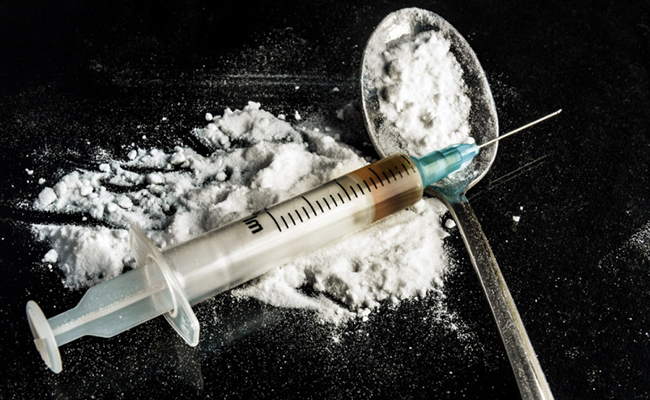What is Addiction?
Before you can determine if you or a loved one has an addiction or drug abuse problem, you must understand what an addiction or drug abuse problem actually is according to the professionals. An addiction is a complex condition, a brain disease, that is manifested through compulsive substance use in spite of the harmful consequences. People who suffer from addiction tend to have an intense focus on getting and using specific drugs.
Addiction is no respecter of persons. Anyone can develop a drug abuse problem. Regardless of social class, age, ability, race, or gender. It can be difficult to identify a drug abuse problem, especially for those who have continued to work and live a relatively normal life. Having a drug problem is no reason to be ashamed. Unless you are refusing to seek help. Take a chance on yourself and get help for yourself or your loved one if necessary. Life will improve if you take that chance.
Identifying a Drug Abuse Problem
Drug abuse, now called substance use disorder, is more common than most might think. If you are concerned you or a loved one has an issue then there are two main areas to look at for signs. These are physical and behavioral. Since drug abuse does not depend on age, the addiction may have started through prescription or street drugs and developed from there.
Physical Symptoms
Physical symptoms of addiction start with tolerance and dependence. Tolerance is usually the first stage in which the person will need more or a higher dose of the medication or drug to achieve the same effect. This means they have built up a tolerance. The next step is dependence which is when the person cannot stop using, even for a little while, without feeling withdrawal symptoms. Dependence and addiction are not the same, but dependence does often lead to addiction if the person does not receive help. Both tolerance and dependence can happen with illegal drugs and prescription medications. Other physical symptoms can include:
- Bloodshot or glazed eyes
- Dilated or constricted pupils
- Abrupt weight changes (increase or decrease)
- Sleep pattern changes (insomnia or sleeping too much)
- Looking unkempt (poor hygiene)
- Unusual body odors
- Poor physical condition
These may not be present for all addicts and some may come and go or change from one extreme to the other over time. However, if several are present along with behavioral symptoms then an addiction is probably present.
Behavioral Symptoms
Behavioral symptoms will vary greatly from person to person, even those using the same drug as people can react differently to what they take. The effects may also come and go based on the amount of usage. Behavioral symptoms include:
- Increased aggression
- Increased irritability
- Lethargy
- Depression (or worsened depression)
- A change in the type of posts on social media
- Involvement in criminal activity
Again, not everything will occur with all people and some people may experience only a few of these symptoms, but it is important to watch out for these changes over time. Addiction can very easily lead a perfectly law abiding person into criminal activity to obtain more drugs if the addiction is severe enough.
Effects on Family and Friends
Addiction is a horrible thing on its own. Unfortunately, addiction does not just affect the user, but all those around him or her and in different ways. Addiction can ruin the user’s life in a short amount of time or over many years. However, the addiction also touches family, friends, and society as a whole. Allow this to be explained. Friends and family members may suspect someone is using, but not say anything for a while. This allows resentment to build up over time and a fight may occur and damage the relationship. Furthermore, friends and family may have to bail an addict out of bad situations, loan them money, or provide shelter when things get their worst. This can get old.
In the worst case scenario, addicts may lie to family and friends or even steal from them to support an addiction. If the addict turns to crime then society is also affected as they must deal with the person going to jail and going through the court system. These negative effects can build until the user has no support which may make the addiction worse or could be the wake up call that is needed.
Getting Help

As with any issue, especially those related to addiction, admitting there is a problem is the first step. Once you or a family member is ready to admit a problem exists, then help is available. Pushing someone into rehab before they are ready is rarely successful, though some who have been court ordered have successfully stayed in recovery long term.
DARA rehab seeks to use a program that is both affordable and effective. With locations in many countries around the world, DARA has taken converted luxury resorts and created an oasis of sorts for those ready to overcome their addictions. By focusing not only on the actual addiction, but also the mind-body connection, DARA is successful in this approach. Clients are kept on a busy schedule that forces them out of the comfort zone of hiding and into life. A typical day may include an early morning, short water workout in the pool while enjoying stunning views. Proceed to a nutritious, bountiful breakfast and then therapy, both group and individual for the day.
The therapy process focuses on education about addiction as well as cognitive behavioral therapy that helps the user learn that thoughts, actions, and behaviors are related and can be altered if you change any single aspect. Each patient will meet and workout with a personal trainer to both improve the body and build self-esteem. There are also sports, meditation, and on occasion movies and games. This keeps the patient busy while also creating chances for interactions and personal growth. Before leaving DARA, you will gain the tools necessary to move back into your every day life. This allows you to reenter your life with what is necessary to stay drug free.
Are You Ready?
If you are ready to get help for a drug abuse problem, give DARA a call. Someone is available 24/7 to help you get started in your first steps to recovery.
CLICK HERE to get a Free Confidential Addiction Rehabilitation Assessment. Alternatively, you can click on the live chat icon to chat with someone right now.


















